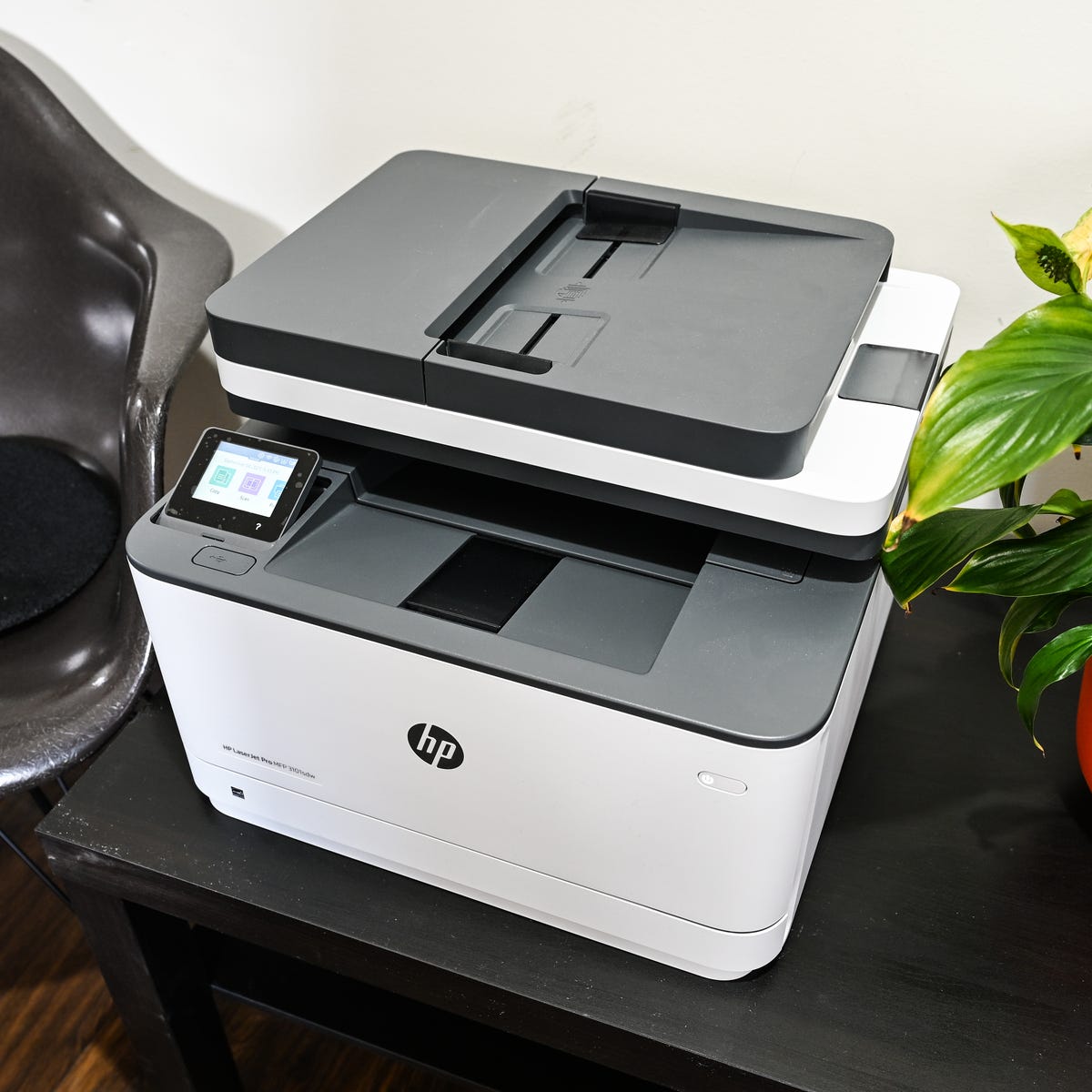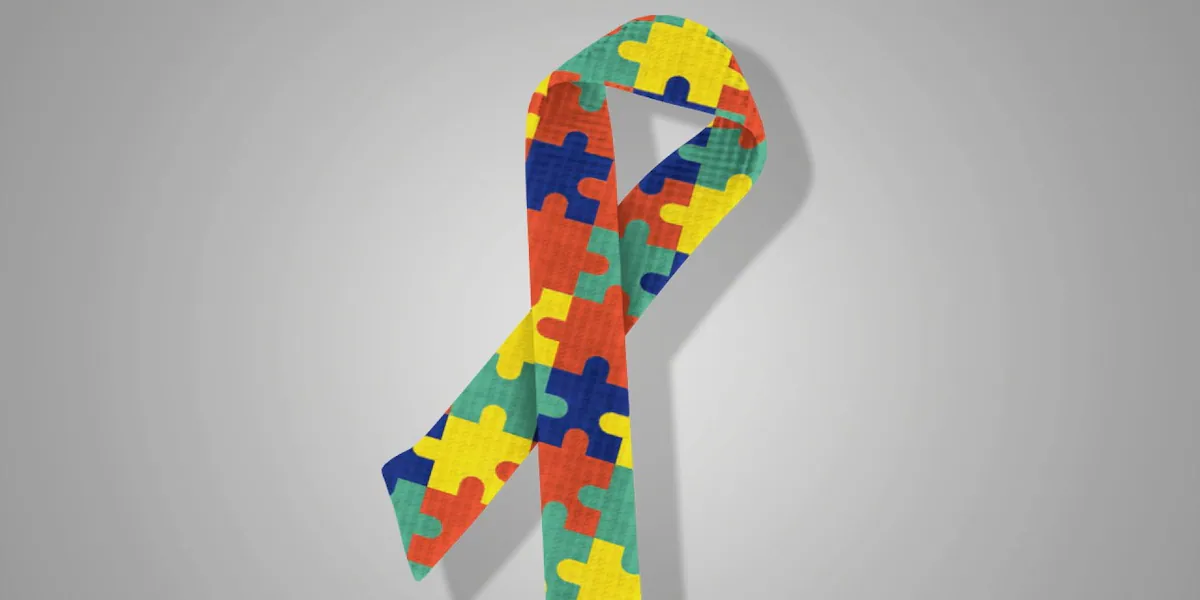By Les Shu
Copyright popularmechanics

Laser printers, known for printing crisp, professional-looking documents quickly, are generally considered big, expensive machines designed for large offices. While some larger models live up to that reputation, there are also plenty of compact options that will fit into your home office if you print files often.While more expensive than an inkjet printer, most laser printers are a better long-term investment, with a lower operating cost and designs made for heavy-duty printing. That said, choosing the right one at a glance can be tricky, and may vary based on your needs. Printers aren’t the most exciting tech products and many folks see them as frustrating, unreliable machines that require constant repair or replacement, and are increasingly unnecessary for the average person in the digital age. While that may be true for some, they remain essential for workers who need to print contracts or create physical records, and students who need hard copies of their homework. And with a little research, you can find a good laser printer that will make your life easier and last for a long time.Best Laser PrintersBest Overall: HP LaserJet Pro MFP 3101sdw Laser PrinterBest Budget: Brother HL-L2460DW Laser PrinterBest Color: HP Color LaserJet Pro MFP 3301fdw Laser PrinterBest for Small Businesses: Brother MFC-L2900DW Laser PrinterHow We SelectedThe printers recommended are based on my personal experience and knowledge in covering printers, as well as researching reputable publications that review them, including PCMag and The Wirecutter. I looked for printers with performance and features that suit both home and small office users, with price and value in mind. I also spent months testing the best overall pick and using it as my everyday printer to ensure it’s a worthy recommendation.I have been reviewing tech products for 25 years, including computing peripherals such as inkjet and laser printers. As an editor at Computer Shopper magazine, I helped develop the printer testing methodology used in the reviews. I then brought that expertise to publications such as Digital Trends and Business Insider, and applied real-world usage that resonates with shoppers as part of the evaluation.Full Reviews LaserJet Pro MFP 3101sdw Laser Printer There’s no perfect laser printer, but if you’re looking for a reliable and easy-to-use unit that makes high-quality prints, the HP LaserJet Pro MFP 3101sdw fits the bill. I’ve been using this printer for several months and found that it’s an ideal fit for my home office. It also has plenty of advanced features that would make it a good fit for a small business.With a 35ppm print speed, the 3101sdw is fast for its intended audience. Connected to a typical home Wi-Fi, it takes about 5 seconds from pressing print to outputting the first page. Printed text looks good even at a lower quality setting, with small fonts maintaining sharpness and legibility. I found the scan quality to be more than adequate for everyday use, but the 300 dpi resolution is too low for designers, photographers, and other creative users. It also runs quiet, which is always a nice bonus.Anybody who needs to make copies will find the ADF-equipped scanner handy, while the 2.7-inch touchscreen makes setup easy. It took me less than 10 minutes to get it up and running. Whether you connect via USB, Ethernet, or Wi-Fi, the printer is very responsive. There’s also a USB port for making quick prints or saving scans with a flash drive.While the 3101sdw is small enough to fit on a large desk, it’s more practical to put it on its own stand. I wouldn’t call it “lightweight,” but I was able to carry it down five floors without too much effort. It won’t win any design awards, either, which is too bad because HP generally knows how to make great-looking products.The paper tray has an average 250-page capacity, but a dealbreaker is there’s no manual feed tray. I didn’t find this to be an issue, but if you need to, say, print on envelopes, this could be problematic as it would involve switching out paper in the main tray. Another expert reviewer dinged the 3101sdw for its lack of fax function, but a workaround for me is to use the HP Smart companion app to scan and send (but not receive) faxes.The 3101sdw offers stronger print quality, a better build, and ease of use. There’s no telling how long mechanical devices like this will last, but HP’s printers are known for their reliability—I have a LaserJet from the 1990s that’s still going strong. HL-L2460DW Laser Printer In my experience, Brother makes affordable laser printers that consistently deliver solid performance and text quality. At 36ppm and a price tag under $200, the HL-L2460DW’s is a strong basic option for a home or small office. Despite its barebones design, it has useful features like double-sided printing, Ethernet connectivity, wireless printing, a generous 250-page paper capacity, and a mobile app. Plus, it’s lightweight and doesn’t take up too much space.The HL-L2460DW can handle a 1,200-page standard-yield toner cartridge or 3,000-page high-yield toner cartridge, but comes with a starter cartridge that only yields 700 pages out of the box. (This is typical of printer manufacturers.) If you plan to print a lot, I’d recommend buying a high-yield cartridge right when you buy the printer.This is a “budget” option, though, so this printer comes with a few caveats. I don’t love the small LCD display, which has a basic interface that doesn’t display much info and doesn’t feel as well-made. The basic operation means there’s no scanning, copying, faxing, ADF, or other multi-function capabilities. Plus, black-and-white graphics and images don’t look as great as text either. User reviews have also complained about its reliability. Still, considering its good balance of price, speed, and print quality, the HL-L2460DW is a good value regardless of one’s budget.If it’s for personal use and you only plan to use it every so often, I’d steer you toward a different model, the HL-L2420DW, which has a 30ppm speed and every aforementioned feature except Ethernet. It’s perfect for casual printing, and it costs $50 less. Color LaserJet Pro MFP 3301fdw Laser Printer Most offices shy away from color laser printers because they are expensive to purchase and maintain, and oftentimes, employees use them to make wasteful prints. Likewise, at home, you’re probably better off going with a color inkjet printer. That said, if you truly need color prints, I love the HP Color LaserJet Pro MFP 3301fdw, which delivers excellent print quality and attractive features like support for glossy paper. It’s a strong, if pricey, complement to any office.Despite its compact footprint, the 3301fdw has a 50-page, duplexing ADF, and a paper tray that holds 250 pages. It’s not the fastest color laser printer, but its 26ppm speed is more than adequate for home or small business use. Print quality is where HP’s laser printers excel. You can expect documents with crisp text and well-saturated, natural-looking color graphics and photos. And unlike most laser printers, the 3301fdw is compatible with select HP glossy paper, allowing you to make photo prints. They don’t really compare to inkjet photo printers, but it’s fine in most cases. Like our overall pick, the 3301fdw is a breeze to set up via its 4.3-inch color touchscreen. For connectivity, it supports USB, Ethernet, Wi-Fi, which covers most home and office networks.You may have guessed the printer’s big con is that it’s pricey to operate. Whether you’re using the standard or high-yield toner options, the cost per page is high. If you’re looking to spend a little less, I’d look at the Brother MFC-L3370CDW, which has a comparable feature-set to the 3301fdw and a lower operating cost. You’re compromising a bit on print quality and performance, though, which is why the HP leads the pack. MFC-L2900DW Laser Printer A true small-business laser printer needs to be a workhorse. It should have a robust, office-centric range of features, print fast, support multiple users, hold a sufficient amount of paper, and have a high duty cycle. Experts agree that Brother makes some of the best laser printers for offices, and the monochrome MFC-L2900DW multi-function model is a particularly good option.Imagine the L2900DW as an enhanced version of the HL-L2460DW. It shares a similar design, small footprint, and print engine, but features a high-capacity 50-page ADF for copying or scanning multi-page documents. The HL-L2460DW also has a single-page duplexing scanner for two-sided pages. There’s even a fax function. A large 3.5-inch touchscreen facilitates setup and on-device operation without a computer, while USB, Wi-Fi, and Ethernet gives you options in how to connect to it. Combined with a fast 36ppm speed, sharp text print quality, low operating cost, and the option to use high-yield cartridges, and you’ve got a very capable all-in-one laser printer.Graphics don’t look as sharp as text, but that shouldn’t be an issue if your office prints mainly documents. While its 250-page paper tray is adequate for a small business, expect to reload often if multiple users print often. There’s no option for a larger or expandable paper tray with this model. The ADF has a scanner resolution of just 600 dpi, but this is plenty for text documents; the flatbed scanner has a 1,200 dpi resolution, which is OK for color images. The output tray’s 100-page capacity is low for heavy usage. One beneficial feature that’s missing is a front USB port, which is handy for printing or faxing documents off a flash drive or saving scans to one.If you need to support a large number of workers, consider stepping up to Brother’s MFC-L5915DW. It has a 70-page ADF and 5-inch LCD, and you can expand its paper capacity beyond the standard 250 pages. With a faster 50ppm speed, support for 18,000-page high-yield cartridges, and a higher duty cycle, it’s an ideal choice for busy offices. It’s a big jump in price, which is why I went with the L2460DW, but may cost less to operate in the long run. What to Consider Whether it’s for an office or your home, a laser printer is a good option if you often print a lot of multi-page documents. If you need a home printer to print out documents occasionally, a more affordable inkjet printer may make more sense. Again, going with a laser printer costs more up front, but pays dividends in the long run as a professional tool or a home tech staple. If you’re on the fence about what to buy, here are the things I look at when I evaluate laser printers:Monochrome or Color?The majority of prints made on a laser printer are typically black-and-white text documents, and most models deliver decent print quality. If you need to print impactful pages with photos and charts, a color laser printer can print higher-quality graphics. Even the best monochrome printers we’ve tested and researched can’t produce the details and clarity of a color ink toner. For example, if you have a multi-colored pie chart, a monochrome reproduction can only do so much to separate the different color shading.Keep in mind, though, that even the cheapest color laser printer will be expensive, and its print quality may not rival that of higher-end models. They also do not support specialty media like glossy photo paper.Single-Function or Multi-FunctionA basic laser printer’s sole function is to print documents, and that’s enough for most people. It’s generally compact and fits on a desk. But if you run a small business or work remotely in a home office, you may want a multi-function, “all-in-one” printer that scans and copies, too, among other tasks. Multi-function printers are far more useful, but they’re larger and cost more due to the extra hardware inside.Yield and Duty Cycle“Yield” refers to the estimated number of pages you can get out of a single toner cartridge. Most laser printers should get around 1,500 pages out of a toner cartridge, while high-yield cartridges should last through 3,000 pages or more.Toner cartridges are expensive, especially for color printers, but they offer a better cost-per-page than ink. My rule of thumb is that high-yield toners will save you money in the long run.Similarly, a laser printer’s “duty cycle” rating refers to the maximum number of prints per month that the manufacturer recommends to keep it in proper working order. Basic laser printers have a duty cycle of around 5,000 pages or less, while heavy-duty models have ratings of 10,000 or higher. Printing more than the rated duty cycle could lead to breakdowns, more maintenance, or a shorter lifespan.SpeedFor personal use or small businesses that print occasionally, a print speed of 25 to 30 pages per minute (ppm) should be fine. Small offices with a few employees that print often may want to look for a faster printer with a speed of 35 to 40 ppm. In a larger office, I’d look for at least 40 ppm, if not more. Keep in mind, the manufacturers are measuring their own speeds under ideal conditions, and real-world results may not always match up. Expect a small discrepancy of a few pages.ConnectivityMost printers rely primarily on a USB cable to connect to your computer, but a hard-wired connection alone isn’t practical in today’s world of wireless laptops, phones, and tablets. I recommend looking for a printer that offers a wireless connection that’s compatible with your most frequently used devices, such as Wi-Fi or Apple AirPrint. Some laser printers also support Ethernet for a high-speed hard-wired connection. Machines designed for office use may include a front USB port so you can plug in a flash drive with the files you need to print.Paper handlingMost laser printers have a paper tray that holds 250 pages, which is enough for personal and small business use. Some compact printers may have a smaller capacity–around 150 pages. If you expect to print a lot, consider a model with a higher-capacity tray or support for multiple trays, and look for an output tray large enough to hold everything you print out. All printers will also have a multi-purpose tray to manually feed non-standard paper like envelopes. Extra featuresIn addition to the essentials, there are some features that I look for which are nice to have, but won’t make or break a printer:Double-sided printing (duplexing) saves paper, and it’s a feature that benefits many users. An automatic document feeder (ADF), is a tray that makes scanning multi-page documents fast and efficient. Though it’s an analog technology, fax support is still prevalent today. A touchscreen display makes navigation easier, allowing you to initiate scans, prints, and copies, and helps diagnose problems without a computer, phone, or tablet.Last but not least: Most laser printers have security features to protect against unauthorized usage, especially units for small and large businesses. Depending on the model, it can be basic or advanced. Depending on your use-case, you may consider some or all of these essential. That said, they are not universal, and there are printers that work well without them. FAQs Are laser printers better than inkjet printers?Laser printers use toners where powder is heated onto paper, while inkjet printers place ink droplets. Laser printers are considered superior for their speed and print quality, but they are expensive to purchase and maintain. Inkjet printers had the advantage of color printing and affordability, but prints need time to dry, and the cost per page could be higher with heavy use. However, the best modern inkjet printers today are fast and deliver great-looking prints, especially photos. They also support different types and sizes of paper. Laser printers can also print in color, but those units are pricey. Besides speed, their advantages are consistency in print quality and long-term reliability.Which technology is better ultimately depends on your needs. Most people will find an inkjet printer sufficient and more versatile, but those who print often may find a laser printer more economical in the long run. In an ideal setup, consider an affordable laser printer for frequent print jobs and a good inkjet printer for color documents and photos.Is a laser printer good for photos?Color laser printers can print photos and graphics on standard paper, but if you want to print on photo paper, an inkjet is the better choice, particularly those that support multi-color ink tanks. Laser printers aren’t designed for photo-quality reproduction, and generally don’t work with specialty paper. (Although, as we discussed, some HP models are compatible with select glossy paper). Are laser printers reliable?Depending on usage and maintenance, a laser printer can last for many years. It’s a mechanical device, though, so there’s no guarantee that it won’t break down and require service. Here are a few tips to keep your printer running as efficiently as possible and maximize its lifespan:Keep the area around the printer dust-free and change the drum unit (the component that transfers toner powder onto paper) and rollers when you notice operation anomalies like frequent paper jams or inconsistent print quality. Avoid using incorrect paper or overfeeding it to avoid jamming the machine. If you encounter a jam, remove the paper gently so that you don’t damage any components. Check for firmware updates from the manufacturer’s website to keep the printer software current and fix any bugs. Toners have a longer shelf life than ink, but consider replacing them after a couple of years if the print quality looks off. It is recommended that official ink made by the manufacturer be used for reliable operation and results, instead of third-party options.For office environments where heavy-duty printing occurs (10,000 pages a month or more), have a technician service the printer once a year. Home models with low usage levels generally don’t need professional servicing.



